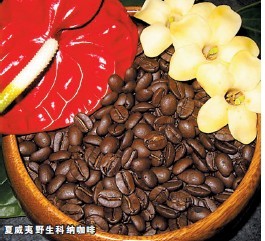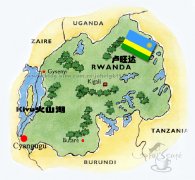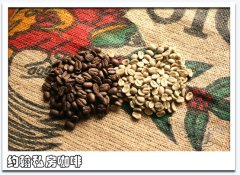The price of wild coffee is better than gold, "the best coffee" Blue Mountain.

Tasting a cup of natural coffee is the dream of coffee gluttons.
Mellow, mild, soft, sweet and fragrant coffee can not only be the main drink on the table of three meals a day, but also a refreshing thing for leisure drinks.
Coffee has been a popular drink in the world for only more than 300 years, but now it has become the first of the three largest drinks in the world (the other two are tea and cocoa) and is popular all over the world.
The voluptuous fragrance of the king of this drink can be smelled from top luxury restaurants in Europe, the United States and Japan to simple cafes and teahouses in small villages and towns in Africa and Southeast Asia.
According to reliable statistics, the average amount of coffee consumed by people in the world is more than 1 billion cups a day, hundreds of billions of cups a year, and 400 billion cups in 2000, so coffee has always been the second largest trade in world trade after oil.
1. Blue Mountain, the Best Coffee
Coffee is a dried product of tufted fuchsia berries (also known as coffee cherries). After cultivation, picking, peeling, drying, grinding, blending and other processing, coffee finally becomes a cup of drink. Different kinds of coffee give off different aromas, including caramel, charcoal, chocolate, fruit, grass, malt, cocoa and so on.
World-renowned coffee has the blue mountains of Jamaica, Indonesia cat, Hawaii Kona, Arab mocha, Colombia Medellin and so on. Today, there are as many as 35 major coffee producing countries in the world.
Every year, graded reviews and auctions of high-quality coffee are held in the world's major coffee producing countries Brazil, Kenya, Indonesia, Colombia and some well-known world trade center cities such as New York, London, Tokyo and so on. There are always buyers at this time. The price of premium coffee has remained high, with top products selling for about $350 a pound, with annual price differentials often as small as $1 to $3.
Among the many famous coffee, the authentic Jamaican Blue Mountain caffeine gets its name from the Blue Mountain area above 3000 meters above sea level. it has all the characteristics of coffee and has the best harmony of three perfect flavors (sweet, sour and bitter). The taste is mellow, rich and moderate, and it is the most famous and expensive coffee variety in the world. It has been called "the best coffee" and buyers flock to it.
The production of Blue Mountain coffee is limited, only about 40,000 kilograms per year. For a long time, its preemptive right has been won by the deep-pocketed Japan. 90% of the Blue Mountain coffee is sold to Japan, while other countries can only share the remaining 10%. Therefore, many of the Blue Mountain coffee around the world are only similar or counterfeit products. Authentic Blue Mountain coffee, regardless of price, is always in short supply.
In addition, Indonesia's "smart cat coffee" (also known as "Kopi Luwak") is also a rare variety. It feeds the coffee beans to the cat "Rwaka" to ferment the coffee beans in its stomach, and then collects the cat feces and recycles the coffee beans for processing. Due to the low production, the rare "smart cat coffee" costs as much as $200 for 50 grams, while 50 grams can only be made into four or five cups, worth $50 each, the price of gold.
2. Wild coffee in Hawaii
The phenomenon of the dominance of traditional famous coffee was finally broken in one day. For several consecutive years since 1995, a product extracted from wild coffee beans from Hawaii in the United States has won the championship in the local and Tokyo grading meetings, and has been rated above AA++, and its quality indicators and prices have also exceeded that of Blue Mountain. In two or three years, it has become the "lady of the world coffee family".
This is the most beautiful coffee bean in the world, with full grains and bright luster. Because it grows on the volcanoes of Hawaii, the unique volcanic climate brews its unique fragrance. Critics agree that it is moist, mellow, full-bodied, full-bodied and has a long finish. Most rarely, it has a blend of wine, fruit and spice, as fascinating as the colorful colors of this volcanic archipelago in the Pacific Ocean.
Since then, wild coffee from countries such as the Philippines, Indonesia and Kenya have also appeared in the market and gradually become known to the world. Wild coffee, natural coffee and native coffee have temporarily become new terms in the coffee industry, with prices reaching an astonishing level of $250 and 50 grams.
For coffee gluttons who are keen on curiosity and the pursuit of good taste, tasting a cup of wild coffee has become a dream.
Wild coffee grows mostly in the mountains above 1500 meters above sea level, completely depends on natural conditions, and only depends on mountain springs and Rain Water. It matures slowly, but because of its full growth, it does not have the bitterness of the varieties usually cultivated in the field. However, it is extremely difficult to collect wild coffee. Mountain people need to set foot in the mountains and even domesticate goats to help find them and pick them back to the workshop for processing before the berries are ripe and fall. In the early years, mountain people collected wild coffee and only picked up ripe fruit that fell to the ground, which greatly reduced the quality and taste.
3. Yinsheng coffee is very popular.
The emergence of wild coffee has led to the trend of traditional coffee cultivation and taste pursuit to return to basics, and Yin raw coffee cultivation has become popular in recent years.
In order to achieve the goal of high yield, traditional field coffee cultivation generally follows the following processes: pioneering, weeding, sterilization, leveling, irrigation, fertilization, pest control, ripening, and large amounts of chemical fertilizers, herbicides and insecticides. these chemical components are more or less residual in the coffee fruit, which is unhealthy and affects the taste. Especially in large areas of coffee plantations, due to the felling of trees and exposure to strong sunlight for many years, the growth and fruit ripening of coffee is faster than that of natural ripening, and the nutrient accumulation is insufficient, which leads to a great difference in taste between wild coffee and wild coffee.
The ideal planting mode of maintaining the natural taste of coffee has been recognized and promoted all over the world through practice in recent years. The planting pattern goes like this: choose areas with high terrain and fertile soil, pay attention to preserving trees, especially those trees that attract birds, plant coffee under the trees, use shade properly to avoid direct sunlight, and make it a shade plant, that is, to make the growth of coffee as close to the original ecology as possible and integrate into the wild system.
During the growth period, rely on birds to get rid of insects, rely on nitrogen-fixing bacteria, bird droppings and fallen leaves in the soil as fertilizers, do not use chemical fertilizers, herbicides and pesticides, and only properly configure an artificially controlled irrigation system. In addition, it is planted in scattered and small areas according to natural conditions.
Coffee from the Galapagos Islands of Ecuador is now recognized as the ideal natural coffee. The country uses a small lake with plenty of fresh water on the island at an altitude of 410 meters, causing the lake to form several streams along the slopes of volcanic rocks, nourishing the island's coffee garden with mineral-rich fresh water and keeping the soil moist and fertile. The government has also designated the archipelago as a national park, leaving only coffee to grow, no longer allowing land for new reclamation, and strictly forbidding the use of chemical fertilizers, pesticides and herbicides.
Coffee cultivation in Kenya was implemented as early as five or six years ago, allowing it to be grown only at an altitude of more than 1500 meters. It is stipulated that only two picking is allowed in a year. In order to ensure that only ripe berries are picked, there are full-time staff touring the forest.
The government also encourages small farmers to grow coffee. after harvesting the fruit, they must first send the fresh beans to a designated station for inspection and cleaning, and then the washing station will return the sun-dried coffee to the growers for follow-up processing. this can ensure the diversity and uniqueness of the coffee taste. Kenyan natural coffee is famous all over the world for its soft and full-bodied taste and is called "gourmet coffee".
Encounter "birdie" embarrassment of the world's longest golf course, Australia's Nile Bolinks course is the world's longest golf course. It spans two time zones and contains some of the flattest and driest zones on earth. It is not only an 18-hole golf course with a length of 1365 kilometers, but also has a unique beautiful scenery.
The Nalebolinks Stadium stretches across two major states in the Australian interior, from Seduna in South Australia to the ancient gold mining town of Calguri in Western Australia. However, playing on such a huge field, golfers often have to put up with the embarrassment of being stolen by unexpected birds.
Important Notice :
前街咖啡 FrontStreet Coffee has moved to new addredd:
FrontStreet Coffee Address: 315,Donghua East Road,GuangZhou
Tel:020 38364473
- Prev

Rwandan coffee is famous for its washed Arabica beans.
Rwandan coffee is absolutely high quality in the form of washed Arabica beans. As far as Africa is concerned, its coffee industry stands out because the country rises and falls by producing the best possible beans. The taste of Rwandan coffee is described as a grassy aroma with tropical climate characteristics. The country's fertile soil and climate help plants grow, and coffee trees seem to be driven
- Next

Papua New Guinea Sigri Bird of Paradise Coffee Bean
Once introduced the bird of paradise this bean, in fact, introduced that this bean is called bird of paradise may be a bit far-fetched, but because the Chinese introduced Papua New Guinea this bean, the beautiful sack of Papua New Guinea's national bird, Bird of Paradise (Bird of Paradise) impressive, so later this bean also left the name bird of paradise. But then there was another one from Pakistan.
Related
- Detailed explanation of Jadeite planting Land in Panamanian Jadeite Manor introduction to the grading system of Jadeite competitive bidding, Red bid, Green bid and Rose Summer
- Story of Coffee planting in Brenka region of Costa Rica Stonehenge Manor anaerobic heavy honey treatment of flavor mouth
- What's on the barrel of Blue Mountain Coffee beans?
- Can American coffee also pull flowers? How to use hot American style to pull out a good-looking pattern?
- Can you make a cold extract with coffee beans? What is the right proportion for cold-extracted coffee formula?
- Indonesian PWN Gold Mandrine Coffee Origin Features Flavor How to Chong? Mandolin coffee is American.
- A brief introduction to the flavor characteristics of Brazilian yellow bourbon coffee beans
- What is the effect of different water quality on the flavor of cold-extracted coffee? What kind of water is best for brewing coffee?
- Why do you think of Rose Summer whenever you mention Panamanian coffee?
- Introduction to the characteristics of authentic blue mountain coffee bean producing areas? What is the CIB Coffee Authority in Jamaica?

